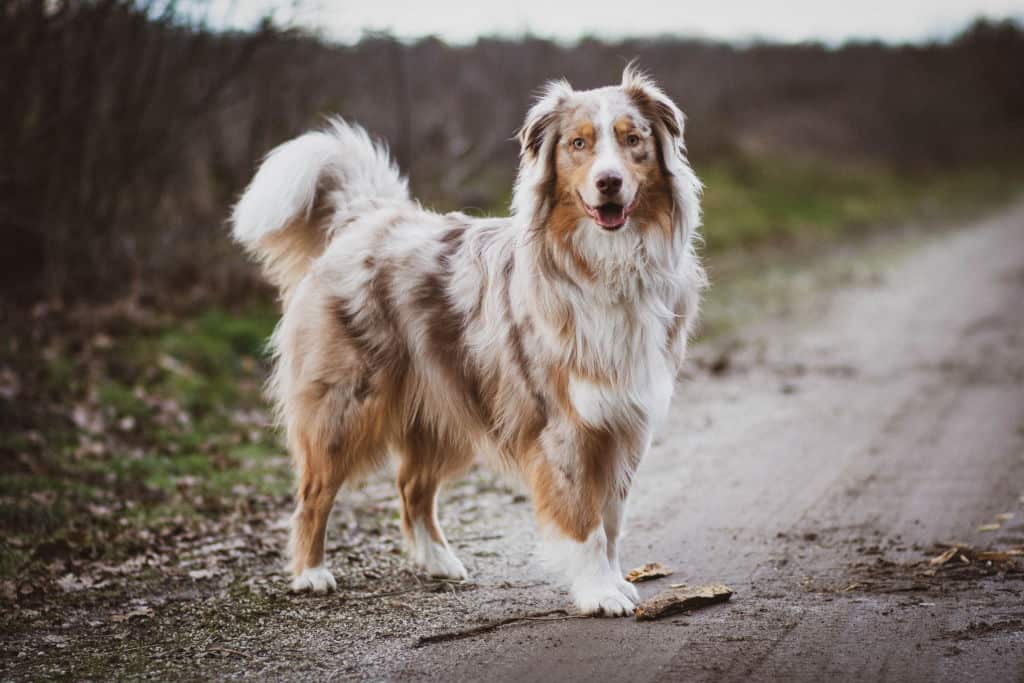Are you tired of calling out your dog’s name, only to be ignored? Teaching your dog to respond to their name is the first step in basic obedience training and is crucial in building a strong bond and ensuring their safety.
Using positive reinforcement training techniques, you can help your dog associate their name with positive experiences and rewards. In this guide, we’ll take you through the process of teaching your dog their name step-by-step.
By following our practical tips and guidance, you’ll be well on your way to having a dog who responds eagerly to their name every time. Let’s get started!

Step 1: Finding a Name for Your Pup
Before you can start teaching your dog to respond to their name, you need to choose the right name to create positive associations with it.
This is an essential step in building a strong foundation for your dog’s training and ensuring that they respond positively to their name.
Choosing the perfect name for your dog can be fun and exciting, but it’s important to keep a few things in mind:
- Choose a name that is easy to pronounce. Avoid names that are too long or complicated, as this can make it harder for your dog to distinguish their name from other words.
- Pick a name with a distinct sound. Avoid names that sound too similar to other words or commands, as this can cause confusion during training.
- Consider choosing a name that reflects your dog’s personality or breed. For instance, if your dog is energetic, you might choose a name like “Bolt” or “Zippy.” Alternatively, if your dog is a Golden Retriever, you might choose a name like “Goldie” or “Sunny.”
- Once you’ve chosen a name, test it out for a few days to see if it fits your dog’s personality and temperament. If the name doesn’t seem to fit, don’t be afraid to try a new one until you find the perfect fit.
We have lots of guides on choosing a dog’s name, such as Geology Names for Dogs. If your dog is a one-eyed dog, check this guide on one-eyed dog names for ideas and inspiration.
Step 2: Using Positive Reinforcement to Train Response
Now that you’ve chosen the perfect name for your dog and started building positive associations with it, it’s time to start training them to respond to their name.
Using positive reinforcement techniques, you can teach your dog to recognize and respond eagerly to their name, even in distracting environments.
Starting in a Quiet Environment
To start training your dog to respond to their name, it’s best to begin in a quiet environment with minimal distractions.
Choose a calm space that is free of distractions, like a bedroom or living room. This will help your dog focus on you and the training session.
Remove any potential distractions, such as toys, food, or other pets. This will help your dog focus on learning and responding to their name, without getting sidetracked.
Read more: How to Choose the Right Training Toy for Your Dog
Make sure your dog is calm and relaxed before starting the training session. If they are too excited or energetic, it may be harder for them to focus on the task at hand.
Starting your training in a quiet and controlled environment sets a solid foundation for your dog to learn and respond to their name effectively.
Saying Your Dog’s Name and Rewarding Them
Once you’ve chosen a quiet environment to start training your dog, it’s time to begin teaching them to respond to their name. This involves creating a positive association between their name and a reward, which can be achieved through a simple process.
Here is the step-by-step process:
- Say your dog’s name in a clear, upbeat tone of voice, and immediately reward them with a treat or praise when they respond to their name. This helps create a positive association between their name and a reward.
- Repeat this process several times, gradually increasing the time between saying their name and rewarding their response. For example, you could start by rewarding your dog immediately after they respond to their name for the first few repetitions.
Then, after a few successful repetitions, you can gradually increase the time between saying their name and giving them a reward by a couple of seconds. This helps your dog learn to associate their name with the reward, even when there is a delay between the two. - Keep it positive, and always end on a high note. This will help keep your dog engaged and motivated to continue learning.
- Be patient and keep training sessions short of no more than 5-10 minutes long to avoid overwhelming your dog.
Tip:
With consistency and positive reinforcement, your dog will soon learn to respond to their name eagerly and reliably.
Gradually Increasing Distractions
After your dog has become comfortable and confident in responding to their name in a quiet environment, it’s time to gradually increase the level of distractions.
Start by introducing mild distractions, such as a toy or a low-level noise, and continue with the same process of saying your dog’s name and rewarding their response. For example, you could have a toy nearby and ask your dog to respond to their name while playing with it. If they respond, reward them with a treat or praise.
As your dog becomes more familiar with responding in the presence of minor distractions, gradually increase the level of distractions.
For example, you could move to a more challenging environment, such as a park or a busy street, with more distractions. Start with a low level of distractions, such as people walking by, and gradually increase distractions by introducing more people or other animals.
Be patient and go at your dog’s pace. If they seem to be struggling with a particular level of distraction, take a step back and work on building their confidence and response in that environment before moving on to the next level.
Step 3: Making Your Dog’s Name Second Nature
One of the keys to successfully training your dog to respond to their name is reinforcing it in everyday situations. Here are a few tips to help you do just that:
- Use your dog’s name consistently in a positive context, such as calling them for a treat, a walk, or some playtime.
- Practice using their name in a variety of settings, both indoors and outdoors.
- Reward your dog when they respond to their name, even outside of training sessions. This reinforces their behavior and helps them associate their name with positive experiences.
- If your dog doesn’t respond to their name, avoid repeating it multiple times, which can dilute its effectiveness. Instead, try to regain their attention through other means, such as clapping your hands or making a noise.
- Avoid using their name in a negative context, such as when you’re disciplining them or when they’re in trouble.
By reinforcing your dog’s name in everyday situations, you’ll help build their confidence and ensure they respond reliably when needed. To learn more about tips when using, check our other guide on most important tips for positive reinforcement.

Step 4: Consistency and Treat Weaning
Now that your dog has learned to respond to their name in a variety of settings, it’s important to reinforce this behavior through repetition and consistency.
By following these two key principles, you can help your dog become reliable in responding to their name. Here’s what you need to know.
Tips for Consistent Dog Training
Here are a few tips to help you maintain consistency in your training sessions and ensure that your dog retains the training over time.
First, remember to train frequently. Consistency is key in dog training, so make sure to practice name training regularly, ideally daily, for short periods of time.
Use the same name for your dog consistently, and be sure to use a clear and upbeat tone when saying their name to reinforce positive associations.
Keep training sessions short. Whether training name calling or anything else, keeping training sessions short (5-10 minutes) will help prevent your dog from becoming bored or overwhelmed.
Vary the training environment to ensure your dog can respond to their name in different settings. Try to practice both indoors and outdoors in different locations.
Finally, try to be patient and persistent and don’t give up if they don’t respond to their name right away. Keep practicing and rewarding good behavior.
Gradually Phasing Out Treats
Gradually phasing out treats is an important step in dog training as it helps your dog learn to respond to commands without expecting a treat every time.
Start by reducing the frequency of treats over time, and replace them with praise or a physical reward such as a belly rub.
This will help your dog understand that positive reinforcement comes from responding to the name itself, rather than just the treat. Over time, the dog will learn to associate the verbal command of their name with positive experiences and respond eagerly even without the presence of a treat.
Step 5: Troubleshooting Common Issues
Addressing the Issues with Name Response
Even with consistent training, some dogs may still have trouble responding to their name. Here are some common issues and how to address them:
If your dog doesn’t respond to their name, it could be because they haven’t fully associated it with a positive experience.
To strengthen your dog’s association between their name and positive experiences, try using high-value treats like small pieces of chicken or cheese. Additionally, be mindful of using your dog’s name in a negative context, such as scolding, as this can create a negative association with their name.
Another reason for lack of response could be too many distractions. If your dog is in a new or stimulating environment, they may not be as focused on you and their training. Try practicing in a quiet and familiar environment, and gradually increase the distractions as they become more comfortable and responsive.
Sometimes, dogs may also become desensitized to their name if it’s overused. If you suspect this may be the case, try using a new, distinct word or sound as their recall command and associate it with positive experiences.
Adapting Your Approach
If you find that your current training approach isn’t working, don’t give up!
If you’re having trouble finding the right treats or rewards to motivate your dog, consider experimenting with different types of treats or even incorporating playtime as a reward.
With a little experimentation and patience, you’ll be well on your way to teaching your dog their name and building a strong bond. So don’t give up, and enjoy the journey!
Putting it All Together
Congratulations! You now have all the tools you need to successfully teach your dog their name and you can move on to the first command: the “Sit” command. Remember to use positive reinforcement techniques, be consistent in your training, and keep practicing regularly.
With a little patience and dedication, your furry friend will learn their name and respond to it eagerly. Happy training!
Alex, a passionate animal lover, has experience in training and understanding animal behavior. As a proud pet parent to two dogs and three cats, he founded AnimalReport.net to share insights from animal experts and expand his knowledge of the animal kingdom.




